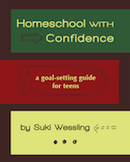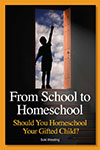I am at the National Association for Gifted Children (NAGC) convention in Denver, CO, and it is NOT the evening of the first day of the convention. Yesterday evening I came back to my hotel room to write and I sat in panic in front of my smartphone: “I have way too much STUFF in my head to write!” Instead, I went through the program and planned the rest of my days here, ate chocolate, and went to bed early.
So here I am at Day 2, ready to write about yesterday.
First a note: Why am I here? Why “gifted”? To answer those questions, please click “About Suki” above to learn about all my various pursuits, my feelings about the incredibly stupid word, “gifted,” and other interesting (or not) trivia.
—
On the way to the conference I read a wonderful book that anyone with a frustrated teen should check out: Forging Paths by Wes Beach. Here’s the review I wrote that will appear on Amazon.com once I can figure out how to post reviews on my phone…. or more likely when I get home!
In my recently published book, From School to Homeschool, I lamented that the stories of gifted homeschoolers had not really been told yet. That was before I read Forging Paths. Though the “kids” in this book are almost grown when they start on their paths, and what they do isn’t what most people would call “homeschooling,” each one of these unique stories adds to our collected understanding of what is possible when it comes to getting the education we need. Wes Beach’s book centers around the stories of individuals who chose unusual paths, but even in their individuality, they offer us new templates for the way education can happen. Inflexible, one-size-fits-all education is a thing of the past. Books like this one are starting to write the story of the future, in which all kids and adults are able to forge the path that is right for them in seeking the education they need and crave.
—
NAGC is to your local gifted conference as a meta-study is to a small-scale experiment, or whiskey is to wine, or Proust is to Brian Selznick. Different beasts, all worthy in their own way. (OK, I must admit that the only time I ever drank whiskey I threw up, so I have my opinions in that regard.)
I started my day yesterday with Temple Grandin and thousands of other adoring audience members. If you don’t know her, Google her and learn what she has to say. She’s our first (as far as I know) autistic motivational speaker, and she deserves all the applause she gets.
I got much from her talk, but here’s what I came away with: “Making kids do the same thing: absolutely beyond rubbish!”
Grandin has no patience for sweet-talk — she tells it like she sees it, which is rather differently than the mainstream. But on this point I share her point of view completely. Our schools are completely misguided — not just for the diagnosably different child that she was, but for all children. Why do we make the poor souls learn the same thing at the same time? Who ever thought that was a good educational approach for two children, much less a nation of hundreds of millions?
—
Frank Wang is “the math guy” — you can apparently see his funny videos on Youtube. I’d never heard of him, but one hour with him sold me on his approach to math. He was a self-described “dumb kid” who found his own way of making it through the world. He explains advanced math concepts in fun ways that any kid would enjoy. Although he no longer runs a for-profit company, he says his games, and more invented by a buddy of his, are available at mathfun.com and kaidy.com. Enjoy!
—-
Layne Kalbfleisch from Kidlab has lots to say about brain research, and much of it would conflict with what you hear in the popular press and in popular books about learning and the brain.
First of all: There are no “right brain” and “left brain” learners. We all use both sides of our brains unless our brains are physically damaged. Interestingly, those people whose IQ test scores put them in “gifted” show more symmetry when they are using their brains for tasks. Even more interestingly, the higher the IQ, the less of the brain gets activated in difficult tasks. Definitely food for thought.
I loved this talk. If you’re a brain research junkie, or if you previously thought you should take everything Malcolm Gladwell writes as fact, check out what she has to say.
—
After that talk, my own feeble brain went into overload mode (someday they will be able to tell me what my brain looks like when this happens) and I needed a glass of wine and a quiet room to digest.
More later when I get to Day 2. I apologize in advance for typos and weird formatting and lack of hyperlinks. [I’ve now added a few – Ed.] This is my first conference without a laptop. I’m using my smartphone and a cool Bluetooth keyboard that my husband gave me and which I have apparently wrecked one of the keys of and yes, I know that is quite dreadful grammar but as I said….. This Is My Brain on Overload! More later.
This is exhausted me in my hotel room!




